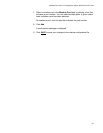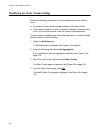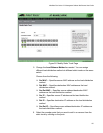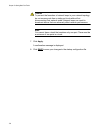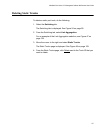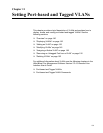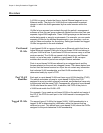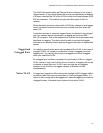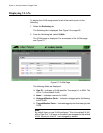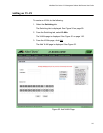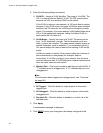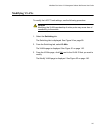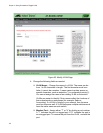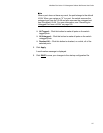AlliedWare Plus Version 2.2.4 Management Software Web Browser User’s Guide
141
The VLAN information within an Ethernet frame is referred to as a tag or
tagged header. A tag, which follows the source and destination addresses
in a frame, contains the VID of the VLAN to which the frame belongs (IEEE
802.3ac standard). This number uniquely identifies each VLAN in a
network.
When the switch receives a frame with a VLAN tag, referred to as a tagged
frame, the switch forwards the frame only to those ports that share the
same VID.
A port that receives or transmits tagged frames is referred to as a tagged
port. Any network device connected to a tagged port must be IEEE
802.1Q-compliant. This is the standard that outlines the requirements and
standards for tagging. The device must be able to process the tagged
information on received frames and add tagged information to transmitted
frames.
Tagged and
Untagged Ports
You need to specify which ports are members of the VLAN. In the case of
a tagged VLAN, it is usually a combination of both untagged ports and
tagged ports. You specify which ports are tagged and which untagged
when you create the VLAN.
An untagged port, whether a member of a port-based VLAN or a tagged
VLAN, can be in only one VLAN at a time. However, a tagged port can be
a member of more than one VLAN. A port can also be an untagged
member of one VLAN and a tagged member of different VLANs
simultaneously.
Native VLAN A tagged port supports traffic coming from multiple VLANs (tagged traffic)
as well as traffic that does not come from a VLAN (untagged traffic). If a
native VLAN is assigned to the tagged port, when the tagged port receives
untagged frames, it forwards those frames to the native VLAN.



